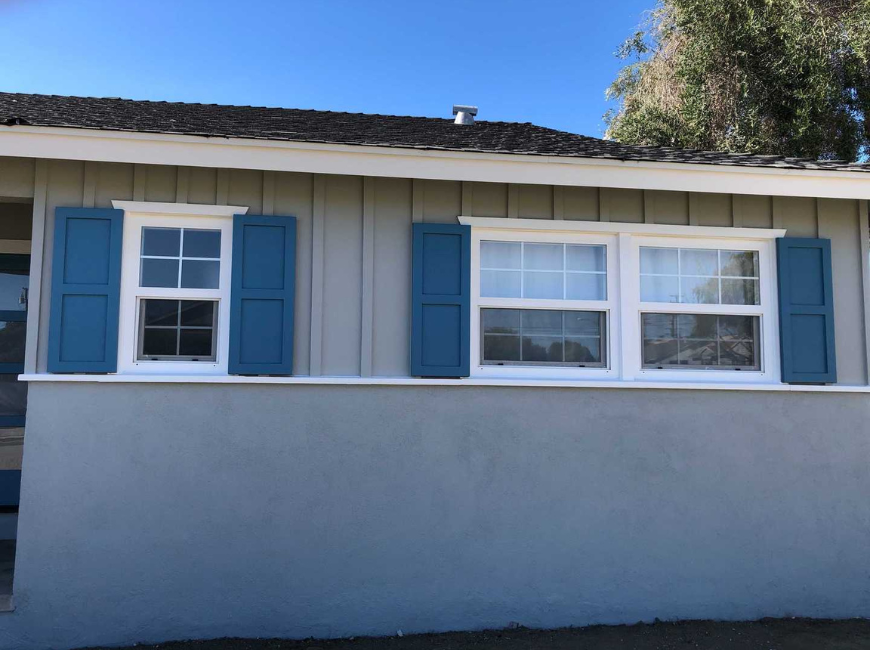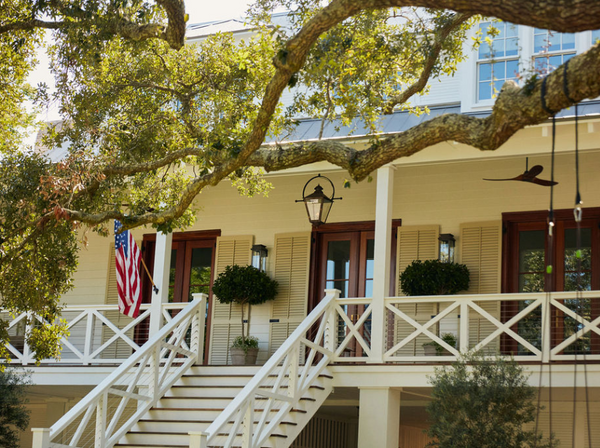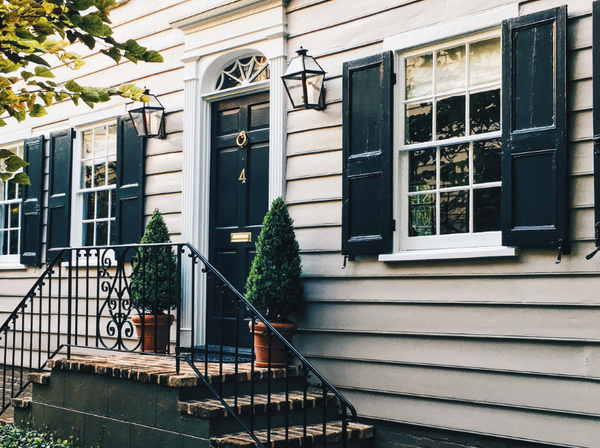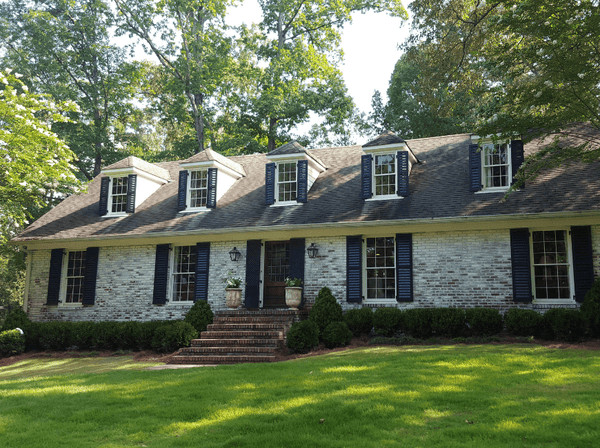Homeowners love to boast about the natural light in a home, but one downside is often dealing with an oddly shaped, oversized window. Large windows can be challenging to work with when you’re thinking of installing new shutters — should they be the same size as the rest of the shutters? Should they be larger? Should you skip them altogether?
Even if your window shutters are purely decorative, meaning they aren’t on hinges or able to swing closed, we typically recommend that you aim to have each shutter measure half the width of your window. That way, even if they are not functional, the shutters at least look like they would close and cover your windows appropriately. Of course, there is no law that says you have to follow that rule. In the end, different solutions work for different house styles. Read through a few of your options to see what might work for your home.
Go for symmetry.
No matter whether you opt for smaller shutters or some equal to your window width, you want to think about creating a balanced look. In order to achieve symmetry, you have to zoom out and look at how much space you have on either side of the window. Often, expansive windows are adjacent to rooflines, the corner of the house, or other windows. You want shutters on either side of the window to be perfectly proportionate, and never two different sizes.

Divide and conquer.
Although we generally recommend having your shutters equal the full width of your window, one option for oversized windows is to use a fraction of the overall measurement. It’s still possible to mimic the balanced feel of functional bifold shutters with fixed shutters: Use one panel on either side and have each panel measure one-quarter the width of the entire window. If, for example, you have a window already divided evenly into three sections (versus an even four or six sections) you could follow the same rules, but have the panels only equal one-third of the window width. Use the grids and panes on your windows as a helpful guide for measuring!
Consider Bahama Shutters.
Bahama Shutters hinge at the top instead of the sides and are propped out at the bottom of the window. For some wide or odd-sized windows, Bahama Shutters are a smart solution — even if you don’t live in a coastal climate. This style can also be a practical pick if you don’t have much space on one or both sides of your windows. Propping open from the top is a functional benefit and great choice for oversized windows that are awkwardly close to the corner of the house.

Before you venture too far down the path of picking out shutter material and color, learn the appropriate way to measure for shutters in our step-by-step guide. And if you’d like professional input, we’re more than happy to have our experts weigh in! Outstanding customer service is our promise, and we’d love to help you get exactly the look you want. Contact us today!







